Instagram Best Practices for 2020: Ad Creative, Placements, & More
Whether you are a novice advertiser on Instagram or a seasoned veteran, it’s always good to go over the basic best practices—especially in an industry like online advertising, where the platforms and the ad options keep changing. Instagram specifically continues to rapidly grow. The platform saw a 5.4% increase in users over 2019, and eMarketer estimates that Instagram will reach 112.5 million US users by the end of this year. According to HootSuite, Instagram has 1 billion monthly users, and 500 million of those use Instagram Stories each day. With more users joining and frequently accessing the platform, there is exponential growth that can come as a result to your company or your clients, as well.
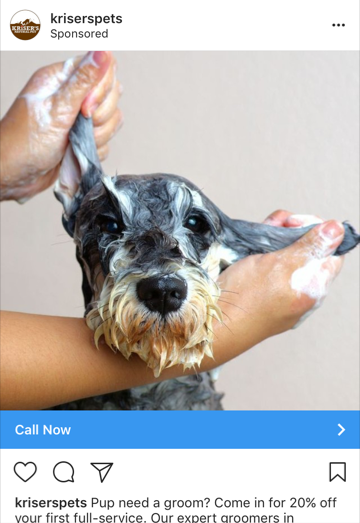
You see why it’s so important to keep up with best practices to make sure you’re getting the most out of your paid campaigns.
So here are the Instagram ads best practices as they stand in 2020, plus what we can most likely expect to continue or evolve in some manner in the future.
Instagram ad creative best practices
It’s important for brands to be concept-driven and on-brand when showcasing products or services on this visual platform regardless of the type of ad creative. But the type of ad creative will dictate what other best practices you should follow to make your campaigns successful. On Instagram there are two types of ad creative: image and video.
Instagram image ads best practices
When it comes to using images in your Instagram ads, incorporate the essence of your brand by using your brand guidelines, such as the colors, fonts, and even your logo so it is recognizable to your target audience. Use bright colors so that these visual features can stand out amidst the white or black background of the app.
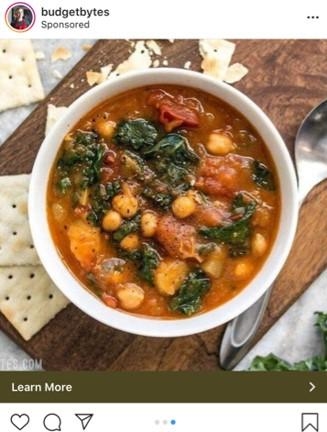
Keep in mind that your images should complement your ad copy and be a seamless transition to your landing page if you are sending people to it through the selected call-to-action button. When writing the ad copy to pair with your images, put yourself in your target audience’s shoes and think about how you want to feel or what you think if you see this particular ad. You may have adjectives in mind for your brand; however, does it align with what your audience would think if they saw your ad?
If you are using a carousel with images, organize them with a common theme, such as a summer line of shoes, your best sellers, or have them tell a story in a linear fashion.
Here’s a cheat sheet:
- Use your brand guidelines (colors, fonts, logo).
- Make sure your ad copy complements your images.
- Keep a strong focal point using your logo or another element of your brand.
- Organize carousel ads by theme or a linear storyline.
Instagram video ad best practices
Instagram users love video—so much so that Instagram Stories seem to be engaged with more these days than feed, as 70% of global users view them daily. While static images can and do perform well in the various Instagram ad placements, video is where it’s at. It’s a quick and easily digestible content format, and you don’t necessarily need high-end equipment or to hire more staff to be able to create successful video ad content. We’ve seen success by simply using what most of us have in our pockets, hands, and bags: our smartphones. From small businesses to celebrities, it’s more authentic this way and more approachable this way to many consumers. While that is valid, if it’s more on-brand for your luxury company or B2B brand to create more refined and edited videos, that’s fine, too. Test and see what works best for your company and the campaign goals you are looking to accomplish.
Most clients also ask us how long a video should be. For the feed, create videos that are 60 seconds or shorter. While that is the max duration, we have noticed that people tend to drop off after viewing the first 10 seconds of a video ad, regardless of how interesting, entertaining, or helpful it is. While of course, a fraction do watch the entire video, it’s important to show your brand, logo, product, or service in that first 10 seconds so people clearly understand who you are and what you are advertising. Don’t leave it until the end of your video to show your product as it’ll be too late to possibly capture more people engaging and taking action.
When it comes to Instagram Story videos, the duration of video ads is 15 seconds max, unless you are using the carousel format. With Instagram Story video carousel ads, you can select up to 10 cards with a maximum of 120 seconds of video content.
With any platform, campaign, or ad placement, if you are using video, make sure to add captions. Many people view Instagram content on mute, and we also want to make sure our content is accessible to anyone that may be hearing impaired. You can easily do so right through Facebook Ads Manager in the ad level when you are selecting your video creative. You can either have Facebook Ads Manager scan your video and provide captions to you in a few seconds or you can upload your own SRT or SubRip subtitle files. If you opt for the first option of having Facebook scan your video and provide captions, be sure to review them and edit as needed; sometimes the system can miscaption words if they aren’t clear, if you have an unusual brand name or it has unique spelling, or if you have someone speaking with an accent on your video.
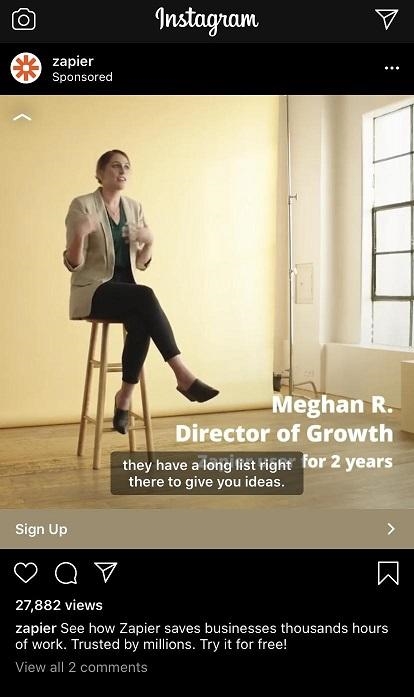
And here’s a cheat sheet for Instagram video ad best practices:
- Creative on-brand, native to the platform videos that don’t look like ads.
- Show your brand, products, services, and captivate your audience in the first 10 seconds of your video.
- Construct a narrative with Instagram Story carousel video ads
- Add captions to your video content.
Lifestyle imagery vs. products in your Instagram ad creative
If your brand wants to promote products, test out product images. But it’s worth noting that, more often than not, we’ve seen lifestyle imagery to strongly outperform product images or videos. In fact, we have seen our client’s authentic lifestyle images for products and services, using content and relatable people outperform images without people by 5x on average. People enjoy looking at people and giving them an image that they can relate to, be inspired by, or yearn to be more like, naturally boosts views, clicks, and conversions. The more organic you can make it feel to the platform, the less it will stick out like an advertisement and people will feel more inclined to take action.
If you don’t have a photographer or carefully crafted lifestyle shots, worry not! Instead, seek out some user-generated content, or UGC. Using images that your customers share is not only as authentic as you can get, but this type of content will also typically get better engagement since most people enjoy having brands share their content. Another benefit? It makes your brand look real and trustworthy, so it can help manage expectations for prospective customers.
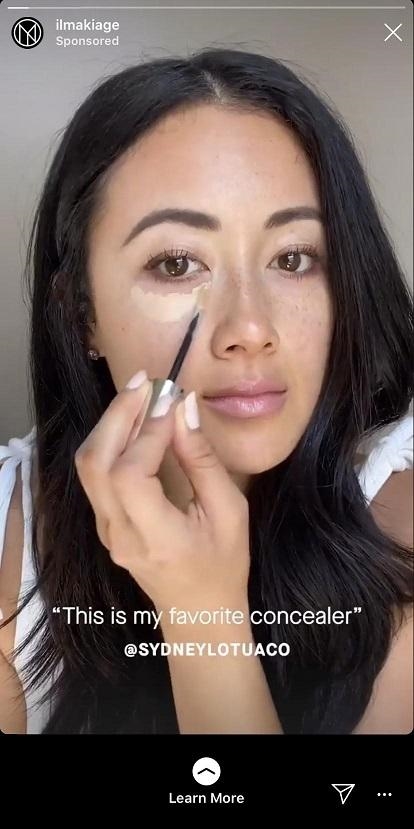
Using UGC and appending testimonials, especially in retargeting campaigns, is a win. Pair them up to put a face with a real testimonial and you are bound to increase your conversion rates.
Instagram ad placement best practices
Currently, you are able to advertise in the Instagram Feed, Instagram Stories, and the Instagram Explore tab. While it’s not an option yet, we wouldn’t be surprised if, with the resurgence of IGTV, that one day we may see an ad placement developed there, as well. For now, let’s focus on the three placement options we do have impression inventory for.

Instagram Feed and Instagram Explore best practices
When running ads in the Instagram Feed and the Instagram Explore tab, use ad copy wisely. Keep it descriptive but brief, as you have a limited number of characters available before they get cut off. This is especially true since most users browse through the mobile app. Keep your ad copy clear and make sure it complements your creative.
Using square (1:1) creatives is recommended. These translate better across ad placements on Facebook and Instagram.
Instagram Stories best practices
If advertising in Instagram Stories, it’s fine to run automatic placements; however, be sure to use the “Edit Placement” feature in the ad level to adjust, resize, or upload a different size creative into Stories so it looks more native to the placement.
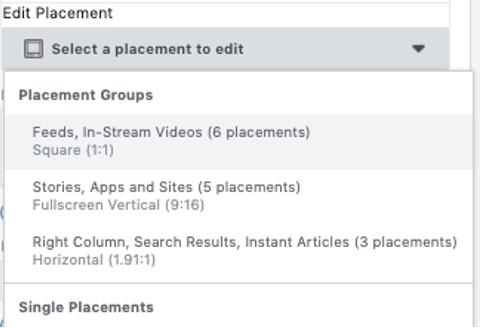
If you want to use Instagram Stories ads polls, this feature can only work if selecting the Instagram Stories placement only. If you select any additional placements in the ad set level, then this feature will not be available in the ad level.
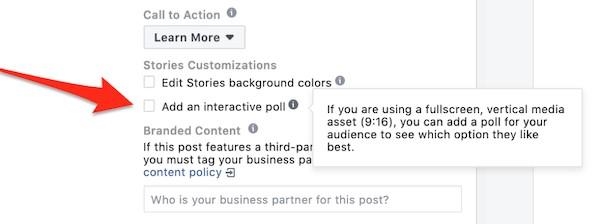
Instagram Stories ads interactive polls are an excellent way to engage your target audience with your ads and to get them into your funnel.
Compared to other placements where square creatives work well, vertical images and videos are better recommended for Instagram Stories, as they appear more native to the placement and take up more screen real estate. If you are repurposing content that doesn’t quite fit the recommended specs for Instagram Stories ad placements, edit the placement in the ad level by cropping and zooming in on your creative.
Images work well for Instagram Stories ads. But you can enhance your results with motion, even if it’s subtle. According to Instagram, and this holds true with what we’ve experienced with our client accounts, using brief but concise scenes rather than longer slow ones in your video creatives tends to perform better. It’s easier for people to consume the information and to act. In this ad example, there are small bits of text with arrows popping up around the showcased product briefly explaining the benefits. Simple yet impactful.
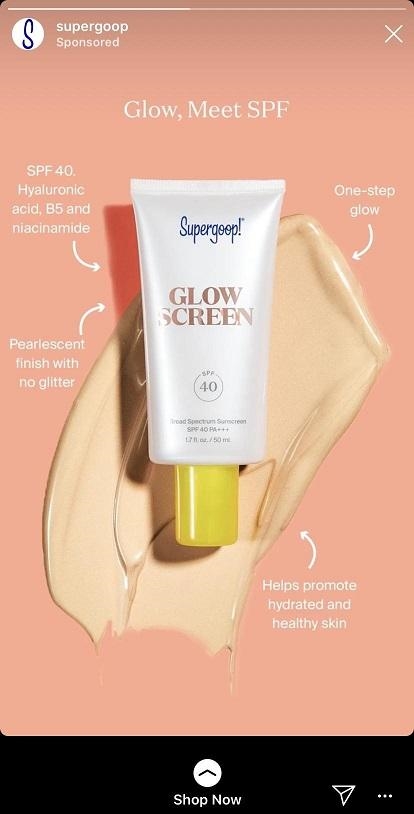
Lastly, with Instagram Stories ads, if you are running carousels, have a dedicated call to action screen in your last carousel card so more focus can be drawn to your desired action completion.
Here’s a quick review:
- Edit the creative if advertising across various placements so it better fits the specs, takes up the screen, and looks more native to the placement.
- Break out the Instagram Stories placement on its own to test interactive poll stickers.
- Test video as it is more easily digestible by viewers
- Add a dedicated call to action screen with carousel ads.
The best practice for Instagram ads? Testing
Here, we’ve outlined best practices for Instagram ad creative and for Instagram ad placements, but you still need to figure out which options work best for your business goals. If you haven’t tested these placement or creative options yet, put them into practice and see how they perform in your campaigns. You might find a new ad type that works well for your business!
Digital & Social Articles on Business 2 Community
(35)

